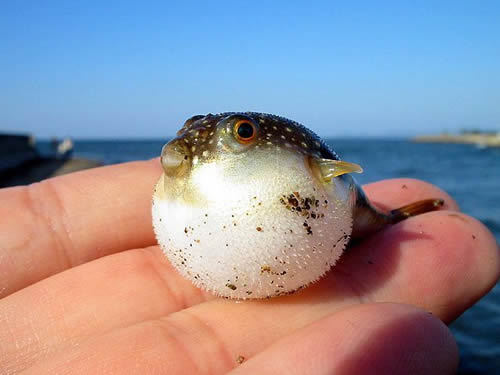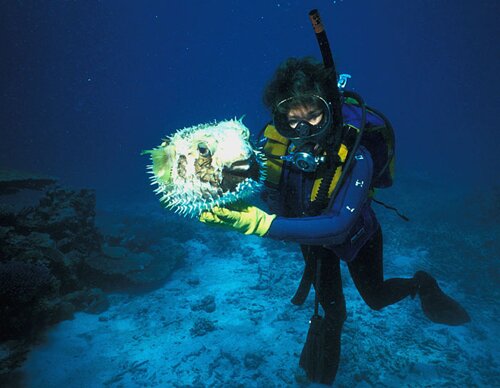Source google.com.pk
Bats Are Vampire
Bats are often divided into two major groups, usually given the rank of suborders, Megachiroptera and Microchiroptera. Although these groups probably do not represent monophyletic lineages (discussed in more detail below), there are several relevant ecological differences between them. These groups will be used throughout this account in describing the diversity of bat life histories. (Teeling, et al., 2002; Teeling, et al., 2005; Van den Bussche and Hoofer, 2004; Vaughan, et al., 2000)
Megachiroptera includes one family (Pteropodidae) and about 166 species. All feed primarily on plant material, either fruit, nectar or pollen. The remaining 16 families (around 759 species) belong to Microchiroptera. The majority of species are insectivorous, and insectivory is widely distributed through all microchiropteran families. However, many microchiropterans have become specialized to eat other kinds of diets. Some bats are carnivorous (feeding on rodents, other bats, reptiles, birds, amphibians, and even fish), many consume fruit, some are specialized for extracting nectar from flowers, and one subfamily (three species in the subfamily Desmodontinae) feeds on nothing but the blood of other vertebrates. Megachiropterans and microchiropterans differ in many other ways. Megachiropterans are found only in the Old World tropics, while microchiropterans are much more broadly distributed. Microchiropterans use highly sophisticated echolocation for orientation; megachiropterans orient primarily using their eyes, although members of one genus, Rousettus, are capable of a simple form of echolocation that is not related to echolocation in microchiropterans. Megachiropteran species control their body temperature within a tight range of temperatures and none hibernates; many microchiropterans have labile body temperatures, and some hibernate. (Hill and Smith, 1984; Nowak, 1991; Vaughan, et al., 2000)
Geographic Range
Bats are found throughout the world in tropical and temperate habitats. They are missing only from polar regions and from some isolated islands. Although bats are relatively common in temperate regions, they reach their greatest diversity in tropical forests. (Hill and Smith, 1984; Museum and Institute of Zoology, 2012; Vaughan, et al., 2000)
Biogeographic Regions nearctic native palearctic native oriental native ethiopian native neotropical native australian native oceanic islands native
Other Geographic Terms cosmopolitan island endemic
Habitat
Bats can be found in many terrestrial habitats below the polar regions. Typical habitats include temperate and tropical forests, deserts, open fields, agricultural areas, and in suburban and urban environments. Many bats forage near freshwater streams, lakes and ponds, preying on insects as they emerge from the water. Generally, if a terrestrial habitat provides access to sufficient roost sites and appropriate food, one or more species will be found there. Bats generally have very specific roosting requirements, which differ among species. They may roost in caves, crevices, trees, under logs, and even in human dwellings. Bats may also use different types of roosts at different times. For example, a species that hibernates in a cave during the winter may use crevices in tree holes as roosts during warmer months.
Habitat Regions temperate tropical terrestrial
Terrestrial Biomes desert or dune savanna or grassland chaparral forest rainforest scrub forest mountains
Wetlands marsh swamp bog
Other Habitat Features urban suburban agricultural riparian estuarine
Physical Description
Bats are unmistakable. No mammals other than bats have true wings and flight. Bat wings are modified forelimbs, much as are bird wings, except in the case of bats the flight surface is covered with skin and supported by four fingers, while in birds the flight surface is provided mostly by feathers and is supported by the wrist and two digits. The flight membrane usually extends down the sides of the body and attaches to the hind legs. Bats also often have a tail membrane called a uropatagium. In order to accomodate powerful flight muscles, the thoracic region of bats is quite robust. In addition to providing power, a massive chest and shoulders maintains the center of gravity between the wings, making flight more efficient. The opposite is true of the posterior end of the body, which is small relative to the chest and back. The hindlimbs in particular are generally short and small, with sharp, curved claws that help bats cling to surfaces in their roost. (Hill and Smith, 1984; Vaughan, et al., 2000)
An important cranial characteristic for recognizing bat families is the nature of the premaxilla. (Hill and Smith, 1984; Vaughan, et al., 2000)
The suborder names, Megachiroptera and Microchiroptera, imply that megabats are all large and microbats are all small, which is is not always the case. The smallest bat is indeed a microchiropteran (Craseonycteris thonglongyai) and weighs only 2 to 3 grams. Likewise, the largest bats are among the Megachiroptera and can weigh up to 1500 grams. Size varies with each group, however, with the smallest megachiropterans weighing only 13 grams and the largest microchiropterans weighing nearly 200 grams. (Vaughan, et al., 2000)
There are several obvious morphological features that distinguish the two suborders. Megachiropterans rely on vision to orient in the dark of night, and thus have large, prominent eyes. All microchiropterans rely heavily on echolocation, and not vision, and generally have small eyes. Instead most microchiropterans have large, complex pinnae (external ears), including an enlarged tragus or antitragus. Megabats have claws on the second digits supporting their wings (with one exception); this is never the case in microbats. Microbats often have dentition or cheek teeth whose morphology can easily be related to dilambdodont teeth; megabats have simplified cheek teeth that are difficult to interpret. (Hill and Smith, 1984; Vaughan, et al., 2000)
Other Physical Features endothermic heterothermic homoiothermic bilateral symmetry
Sexual Dimorphism sexes alike female larger sexes shaped differently
Reproduction
Mating systems vary among bat species. Many temperate bats mate in the fall as they aggregate near their winter hibernacula. These bats are generally promiscuous. Pteropodids also tend to have promiscuous mating systems. These bats often aggregate in large groups in one or a few trees and mate with various nearby individuals. In many neotropical microchiropterans, one or two males defend small harems of females. Males secure all matings with their harem females until other males supplant them. While most species are either polygynous or promiscuous, there are some bats that are monogamous. In these cases, the male, female, and their offspring roost together in a family group and males may contribute to protecting and feeding the young. Examples include Vampyrum spectrum, Lavia frons, Hipposideros galeritus, H. beatus, Nycteris hispida, N. arge, N. nana, and some Kerivoula species. One megachiropteran species, Hypsignathus monstrosus, has a lek mating system, where males gather in a lekking arena to display to females, who then choose the most desirable of mates. Courtship behavior is complex in some species, while in others, it can be nearly nonexistent (e.g., males of some species will mate with hibernating females that barely react to the copulation event). (Hill and Smith, 1984; Vaughan, et al., 2000)
Mating System monogamous polygynous polygynandrous (promiscuous)
A large number of bats breed seasonally. Temperate species often breed before they enter hibernation while many tropical species breed in a cycle that is linked to wet-dry seasonality. All species that are not seasonal breeders occur in the tropics, where resources may not be as variable as in temperate regions. The function of seasonal breeding is to coordinate reproduction with the availability of resources to support newborn young. To this end, many species have also evolved complex reproductive physiology including delayed ovulation, sperm storage, delayed fertilization, delayed implantation, and embryonic diapause. Females generally give birth to one two two pups per litter, but in some species in the genus Lasiurus, litter sizes may reach 3 or 4 individuals (e.g. Lasiurus borealis, L.seminolus, and L.cinereus). (Hill and Smith, 1984; Nowak, 1991)
Key Reproductive Features iteroparous seasonal breeding year-round breeding gonochoric/gonochoristic/dioecious (sexes separate) sexual viviparous sperm-storing delayed fertilization delayed implantation embryonic diapause
At birth, newborn bats weigh between 10 and 30% of their mother's weight, putting a large energetic strain on pregnant females. All newborn bats are completely dependent on their mothers for both protection and nourishment. This is true even in Pteropodidae, where pups are born with fur and open eyes. Microchiropterans tend to be more altricial at birth.
Aside from the few monogamous bat species, where males contribute to feeding and protecting young, all parental care in bats is provided by females. Some males defend feeding territories for their harems, thereby contributing indirectly to the survival of their young after birth. Bats cannot fly when they are born, so young bats either remain in the roost while their mothers forage, or cling to their mothers' during flight. Females of many species form maternity colonies while they are lactating and rearing young. When the young are left in the roost as the mother forages, they cluster together to keep warm. Upon their return, mothers and their respective infants can identify each other by their vocalizations and scent, and thus can successfully reunite. In some species, females will communally care for young, with "babysitters" caring for the cluster of young while their roost-mates forage.
Juveniles grow quickly and can usually fly within 2 to 4 weeks of birth. They are weaned shortly thereafter. Thus, lactation is relatively short, but metabolically demanding. (Hill and Smith, 1984)
Parental Investment altricial pre-fertilization provisioning protecting female pre-hatching/birth provisioning female protecting female pre-weaning/fledging provisioning male female protecting male female
Lifespan / Longevity
Bats live surprisingly long lives. Typically, mammalian lifespans roughly correlate with their body size: smaller mammals live short lives, whereas larger mammals live longer lives. Bats are the only group of mammals that does not conform to this relationship. Despite the fact that bats are generally small mammals, many bats can live over 30 years in the wild. Where data on longevity is available, lifespans in the wild are often recorded from 10 to 25 years. Typically, a given species will live at least 3.5 times longer than other mammals of similar size. (Wilkinson and South, 2002)
There are several viable hypotheses to explain longevity in bats. Hibernation and daily torpor may restrict lifetime energy expenditure in individuals, allowing them to live longer. Lack of predation pressure on adults may also allow bats to live long lives. For their size, bats have low reproductive rates in a given breeding season. Typically, females give birth to only one or two young per year, but reproduce many times over a long life. By evolving a reproductive strategy that is more typical of large mammals, perhaps lifespans have evolved to match those of large mammals as well. (Wilkinson and South, 2002)
The longest-lived bat on record is a little brown bat (Myotis lucifigus). One banded individual was recaptured 33 years after it was originally tagged. These bats weigh only 7 grams as adults, roughly 1/3 the size of a house mouse. Myotis lucifugus is one of the most widely studied species worldwide; thus, it would not be surprising if other, less well-known species live even longer. (Kurta, 1995)
Behavior
The behavior that unifies all of Chiroptera is flight. Bats are the only group of mammals to have evolved powered flight (although many species glide), and only the third vertebrate group to do so. Depending upon the size and shape of their wings relative to their body mass, different species of bats may have different flight styles. Many species have large, broad wings and relatively small bodies, which allows them to fly slowly but with high maneuverability. This flight behavior is useful for chasing evasive insect prey and maneuvering within a dense forest at night. Some species with large, broad wings can even hover. This behavior is especially useful for bats that eat nectar or pollen from stationary flowers. Other species have long, narrow wings, which are useful for acheiving high speeds, but which restricts maneuverability. Many of these species forage in open spaces and may be able to fly long distances. These two wing morphologies represent the ends of a continuum, most species have wing morphologies that fall between these extremes. (Hill and Smith, 1984; Nowak, 1991; Vaughan, et al., 2000)
Many bats live in groups, while some species are solitary. Often, bats roost in colonies for some portion of the year. Living in a colony can serve many functions. For bats, one of the main purposes of group living is to collectively conserve heat. Bats are small and have high metabolic rates, so heat conservation is vital. Many bats hibernate during the winter and undergo daily torpor to conserve energy. Clustering together while roosting can further reduce heat loss. Some bats that roost together do so in groups of several individuals. Some groups (e.g. Tadarida) roost in caves in groups of thousands, or even millions. Some bat species migrate to hibernation sites or to follow a food source (flowering cacti, for example). Most bat species are not known to defend foraging areas, but this behavior is known from some tropical species. Territorial defense of roosting sites is also known in some species. (Hill and Smith, 1984; Vaughan, et al., 2000)
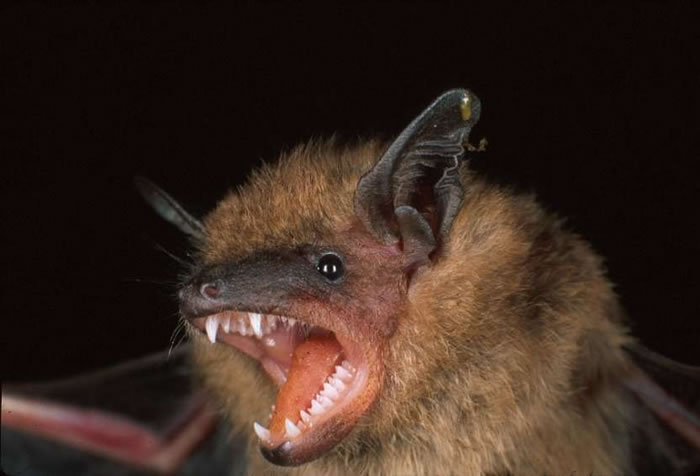

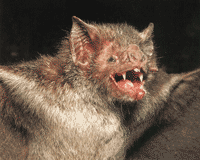


Bats Are Vampire
Bats are often divided into two major groups, usually given the rank of suborders, Megachiroptera and Microchiroptera. Although these groups probably do not represent monophyletic lineages (discussed in more detail below), there are several relevant ecological differences between them. These groups will be used throughout this account in describing the diversity of bat life histories. (Teeling, et al., 2002; Teeling, et al., 2005; Van den Bussche and Hoofer, 2004; Vaughan, et al., 2000)
Megachiroptera includes one family (Pteropodidae) and about 166 species. All feed primarily on plant material, either fruit, nectar or pollen. The remaining 16 families (around 759 species) belong to Microchiroptera. The majority of species are insectivorous, and insectivory is widely distributed through all microchiropteran families. However, many microchiropterans have become specialized to eat other kinds of diets. Some bats are carnivorous (feeding on rodents, other bats, reptiles, birds, amphibians, and even fish), many consume fruit, some are specialized for extracting nectar from flowers, and one subfamily (three species in the subfamily Desmodontinae) feeds on nothing but the blood of other vertebrates. Megachiropterans and microchiropterans differ in many other ways. Megachiropterans are found only in the Old World tropics, while microchiropterans are much more broadly distributed. Microchiropterans use highly sophisticated echolocation for orientation; megachiropterans orient primarily using their eyes, although members of one genus, Rousettus, are capable of a simple form of echolocation that is not related to echolocation in microchiropterans. Megachiropteran species control their body temperature within a tight range of temperatures and none hibernates; many microchiropterans have labile body temperatures, and some hibernate. (Hill and Smith, 1984; Nowak, 1991; Vaughan, et al., 2000)
Geographic Range
Bats are found throughout the world in tropical and temperate habitats. They are missing only from polar regions and from some isolated islands. Although bats are relatively common in temperate regions, they reach their greatest diversity in tropical forests. (Hill and Smith, 1984; Museum and Institute of Zoology, 2012; Vaughan, et al., 2000)
Biogeographic Regions nearctic native palearctic native oriental native ethiopian native neotropical native australian native oceanic islands native
Other Geographic Terms cosmopolitan island endemic
Habitat
Bats can be found in many terrestrial habitats below the polar regions. Typical habitats include temperate and tropical forests, deserts, open fields, agricultural areas, and in suburban and urban environments. Many bats forage near freshwater streams, lakes and ponds, preying on insects as they emerge from the water. Generally, if a terrestrial habitat provides access to sufficient roost sites and appropriate food, one or more species will be found there. Bats generally have very specific roosting requirements, which differ among species. They may roost in caves, crevices, trees, under logs, and even in human dwellings. Bats may also use different types of roosts at different times. For example, a species that hibernates in a cave during the winter may use crevices in tree holes as roosts during warmer months.
Habitat Regions temperate tropical terrestrial
Terrestrial Biomes desert or dune savanna or grassland chaparral forest rainforest scrub forest mountains
Wetlands marsh swamp bog
Other Habitat Features urban suburban agricultural riparian estuarine
Physical Description
Bats are unmistakable. No mammals other than bats have true wings and flight. Bat wings are modified forelimbs, much as are bird wings, except in the case of bats the flight surface is covered with skin and supported by four fingers, while in birds the flight surface is provided mostly by feathers and is supported by the wrist and two digits. The flight membrane usually extends down the sides of the body and attaches to the hind legs. Bats also often have a tail membrane called a uropatagium. In order to accomodate powerful flight muscles, the thoracic region of bats is quite robust. In addition to providing power, a massive chest and shoulders maintains the center of gravity between the wings, making flight more efficient. The opposite is true of the posterior end of the body, which is small relative to the chest and back. The hindlimbs in particular are generally short and small, with sharp, curved claws that help bats cling to surfaces in their roost. (Hill and Smith, 1984; Vaughan, et al., 2000)
An important cranial characteristic for recognizing bat families is the nature of the premaxilla. (Hill and Smith, 1984; Vaughan, et al., 2000)
The suborder names, Megachiroptera and Microchiroptera, imply that megabats are all large and microbats are all small, which is is not always the case. The smallest bat is indeed a microchiropteran (Craseonycteris thonglongyai) and weighs only 2 to 3 grams. Likewise, the largest bats are among the Megachiroptera and can weigh up to 1500 grams. Size varies with each group, however, with the smallest megachiropterans weighing only 13 grams and the largest microchiropterans weighing nearly 200 grams. (Vaughan, et al., 2000)
There are several obvious morphological features that distinguish the two suborders. Megachiropterans rely on vision to orient in the dark of night, and thus have large, prominent eyes. All microchiropterans rely heavily on echolocation, and not vision, and generally have small eyes. Instead most microchiropterans have large, complex pinnae (external ears), including an enlarged tragus or antitragus. Megabats have claws on the second digits supporting their wings (with one exception); this is never the case in microbats. Microbats often have dentition or cheek teeth whose morphology can easily be related to dilambdodont teeth; megabats have simplified cheek teeth that are difficult to interpret. (Hill and Smith, 1984; Vaughan, et al., 2000)
Other Physical Features endothermic heterothermic homoiothermic bilateral symmetry
Sexual Dimorphism sexes alike female larger sexes shaped differently
Reproduction
Mating systems vary among bat species. Many temperate bats mate in the fall as they aggregate near their winter hibernacula. These bats are generally promiscuous. Pteropodids also tend to have promiscuous mating systems. These bats often aggregate in large groups in one or a few trees and mate with various nearby individuals. In many neotropical microchiropterans, one or two males defend small harems of females. Males secure all matings with their harem females until other males supplant them. While most species are either polygynous or promiscuous, there are some bats that are monogamous. In these cases, the male, female, and their offspring roost together in a family group and males may contribute to protecting and feeding the young. Examples include Vampyrum spectrum, Lavia frons, Hipposideros galeritus, H. beatus, Nycteris hispida, N. arge, N. nana, and some Kerivoula species. One megachiropteran species, Hypsignathus monstrosus, has a lek mating system, where males gather in a lekking arena to display to females, who then choose the most desirable of mates. Courtship behavior is complex in some species, while in others, it can be nearly nonexistent (e.g., males of some species will mate with hibernating females that barely react to the copulation event). (Hill and Smith, 1984; Vaughan, et al., 2000)
Mating System monogamous polygynous polygynandrous (promiscuous)
A large number of bats breed seasonally. Temperate species often breed before they enter hibernation while many tropical species breed in a cycle that is linked to wet-dry seasonality. All species that are not seasonal breeders occur in the tropics, where resources may not be as variable as in temperate regions. The function of seasonal breeding is to coordinate reproduction with the availability of resources to support newborn young. To this end, many species have also evolved complex reproductive physiology including delayed ovulation, sperm storage, delayed fertilization, delayed implantation, and embryonic diapause. Females generally give birth to one two two pups per litter, but in some species in the genus Lasiurus, litter sizes may reach 3 or 4 individuals (e.g. Lasiurus borealis, L.seminolus, and L.cinereus). (Hill and Smith, 1984; Nowak, 1991)
Key Reproductive Features iteroparous seasonal breeding year-round breeding gonochoric/gonochoristic/dioecious (sexes separate) sexual viviparous sperm-storing delayed fertilization delayed implantation embryonic diapause
At birth, newborn bats weigh between 10 and 30% of their mother's weight, putting a large energetic strain on pregnant females. All newborn bats are completely dependent on their mothers for both protection and nourishment. This is true even in Pteropodidae, where pups are born with fur and open eyes. Microchiropterans tend to be more altricial at birth.
Aside from the few monogamous bat species, where males contribute to feeding and protecting young, all parental care in bats is provided by females. Some males defend feeding territories for their harems, thereby contributing indirectly to the survival of their young after birth. Bats cannot fly when they are born, so young bats either remain in the roost while their mothers forage, or cling to their mothers' during flight. Females of many species form maternity colonies while they are lactating and rearing young. When the young are left in the roost as the mother forages, they cluster together to keep warm. Upon their return, mothers and their respective infants can identify each other by their vocalizations and scent, and thus can successfully reunite. In some species, females will communally care for young, with "babysitters" caring for the cluster of young while their roost-mates forage.
Juveniles grow quickly and can usually fly within 2 to 4 weeks of birth. They are weaned shortly thereafter. Thus, lactation is relatively short, but metabolically demanding. (Hill and Smith, 1984)
Parental Investment altricial pre-fertilization provisioning protecting female pre-hatching/birth provisioning female protecting female pre-weaning/fledging provisioning male female protecting male female
Lifespan / Longevity
Bats live surprisingly long lives. Typically, mammalian lifespans roughly correlate with their body size: smaller mammals live short lives, whereas larger mammals live longer lives. Bats are the only group of mammals that does not conform to this relationship. Despite the fact that bats are generally small mammals, many bats can live over 30 years in the wild. Where data on longevity is available, lifespans in the wild are often recorded from 10 to 25 years. Typically, a given species will live at least 3.5 times longer than other mammals of similar size. (Wilkinson and South, 2002)
There are several viable hypotheses to explain longevity in bats. Hibernation and daily torpor may restrict lifetime energy expenditure in individuals, allowing them to live longer. Lack of predation pressure on adults may also allow bats to live long lives. For their size, bats have low reproductive rates in a given breeding season. Typically, females give birth to only one or two young per year, but reproduce many times over a long life. By evolving a reproductive strategy that is more typical of large mammals, perhaps lifespans have evolved to match those of large mammals as well. (Wilkinson and South, 2002)
The longest-lived bat on record is a little brown bat (Myotis lucifigus). One banded individual was recaptured 33 years after it was originally tagged. These bats weigh only 7 grams as adults, roughly 1/3 the size of a house mouse. Myotis lucifugus is one of the most widely studied species worldwide; thus, it would not be surprising if other, less well-known species live even longer. (Kurta, 1995)
Behavior
The behavior that unifies all of Chiroptera is flight. Bats are the only group of mammals to have evolved powered flight (although many species glide), and only the third vertebrate group to do so. Depending upon the size and shape of their wings relative to their body mass, different species of bats may have different flight styles. Many species have large, broad wings and relatively small bodies, which allows them to fly slowly but with high maneuverability. This flight behavior is useful for chasing evasive insect prey and maneuvering within a dense forest at night. Some species with large, broad wings can even hover. This behavior is especially useful for bats that eat nectar or pollen from stationary flowers. Other species have long, narrow wings, which are useful for acheiving high speeds, but which restricts maneuverability. Many of these species forage in open spaces and may be able to fly long distances. These two wing morphologies represent the ends of a continuum, most species have wing morphologies that fall between these extremes. (Hill and Smith, 1984; Nowak, 1991; Vaughan, et al., 2000)
Many bats live in groups, while some species are solitary. Often, bats roost in colonies for some portion of the year. Living in a colony can serve many functions. For bats, one of the main purposes of group living is to collectively conserve heat. Bats are small and have high metabolic rates, so heat conservation is vital. Many bats hibernate during the winter and undergo daily torpor to conserve energy. Clustering together while roosting can further reduce heat loss. Some bats that roost together do so in groups of several individuals. Some groups (e.g. Tadarida) roost in caves in groups of thousands, or even millions. Some bat species migrate to hibernation sites or to follow a food source (flowering cacti, for example). Most bat species are not known to defend foraging areas, but this behavior is known from some tropical species. Territorial defense of roosting sites is also known in some species. (Hill and Smith, 1984; Vaughan, et al., 2000)
Bats

Bats

Bats

Bats

Bats

Bats









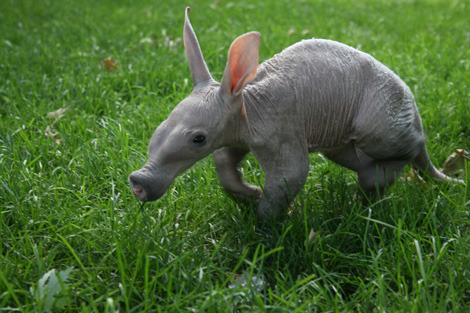

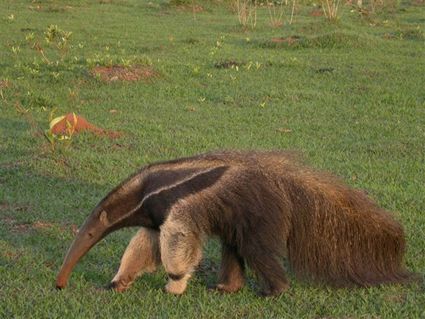
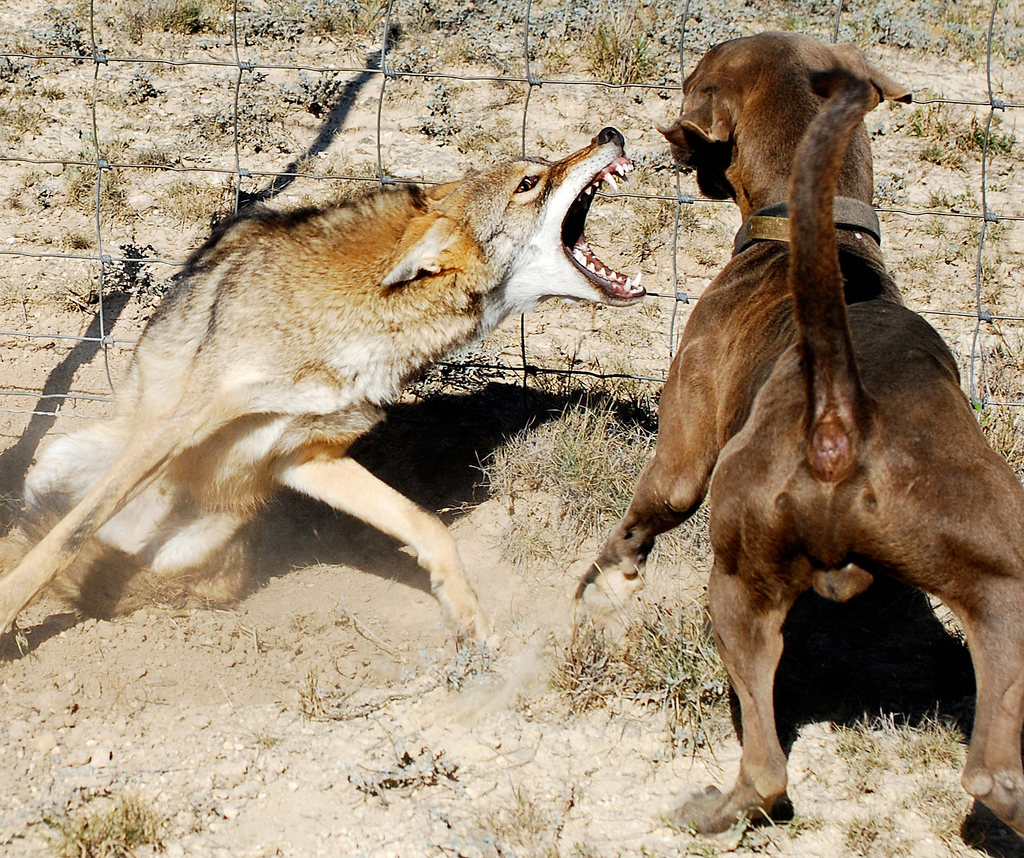







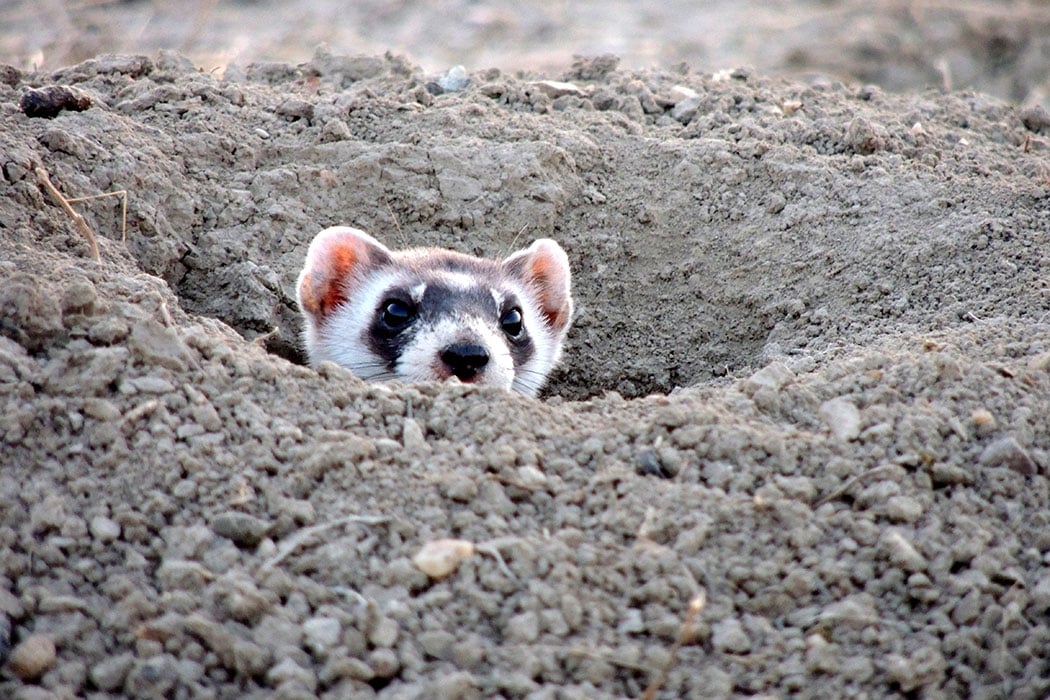
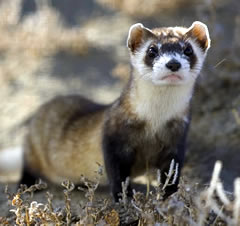
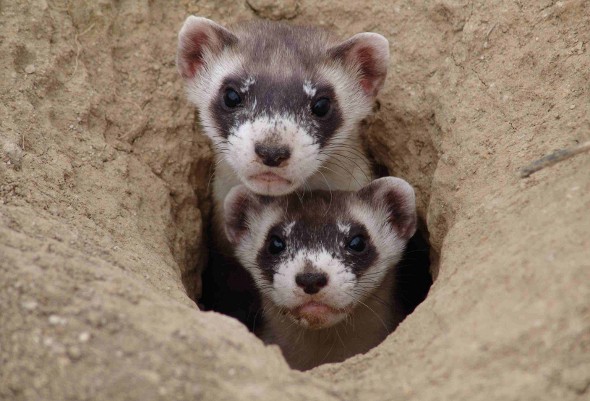



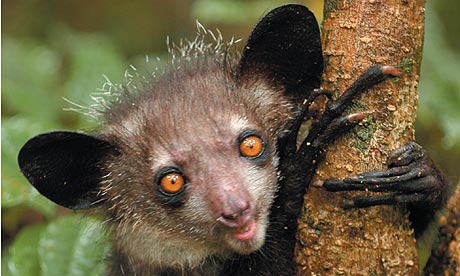



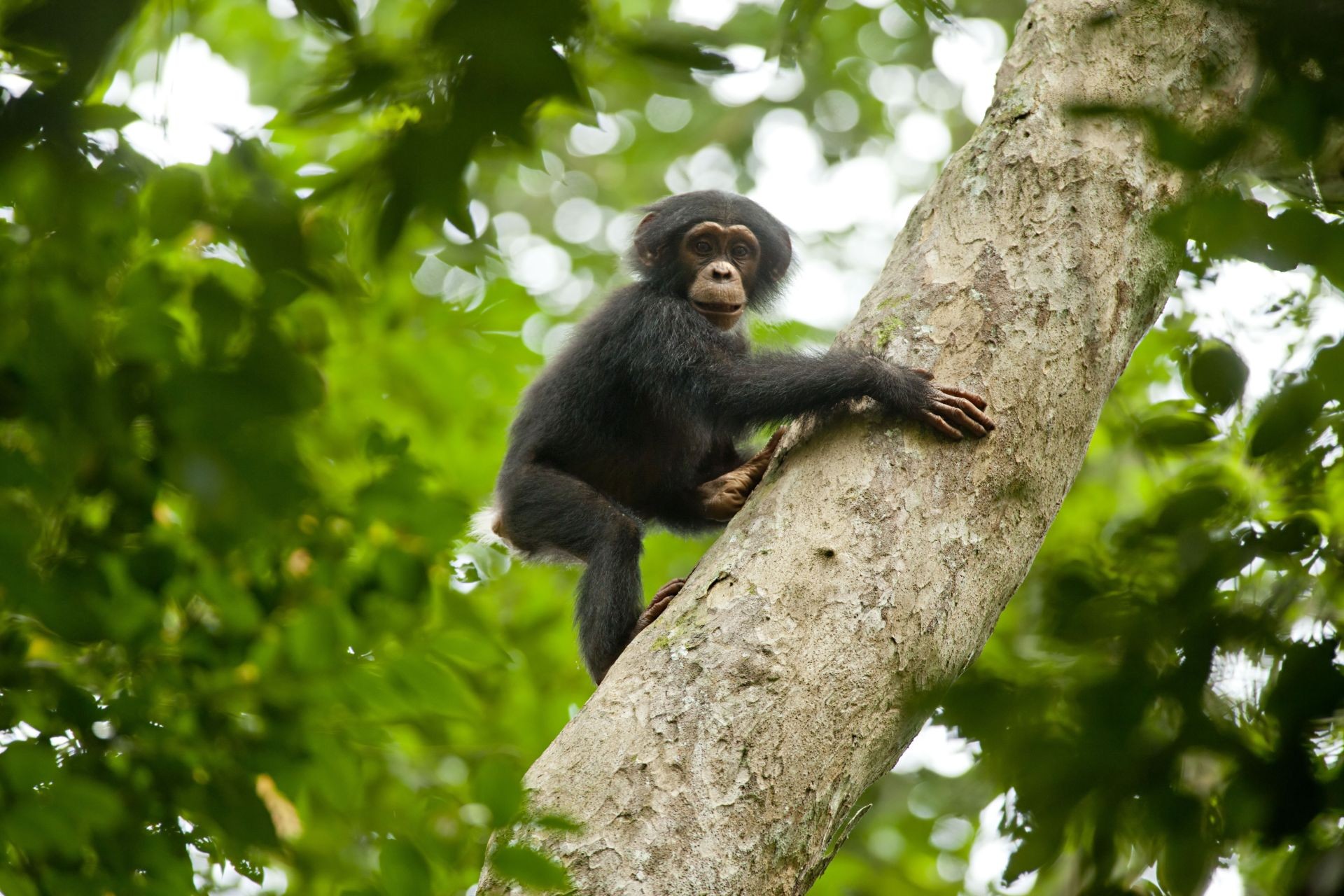

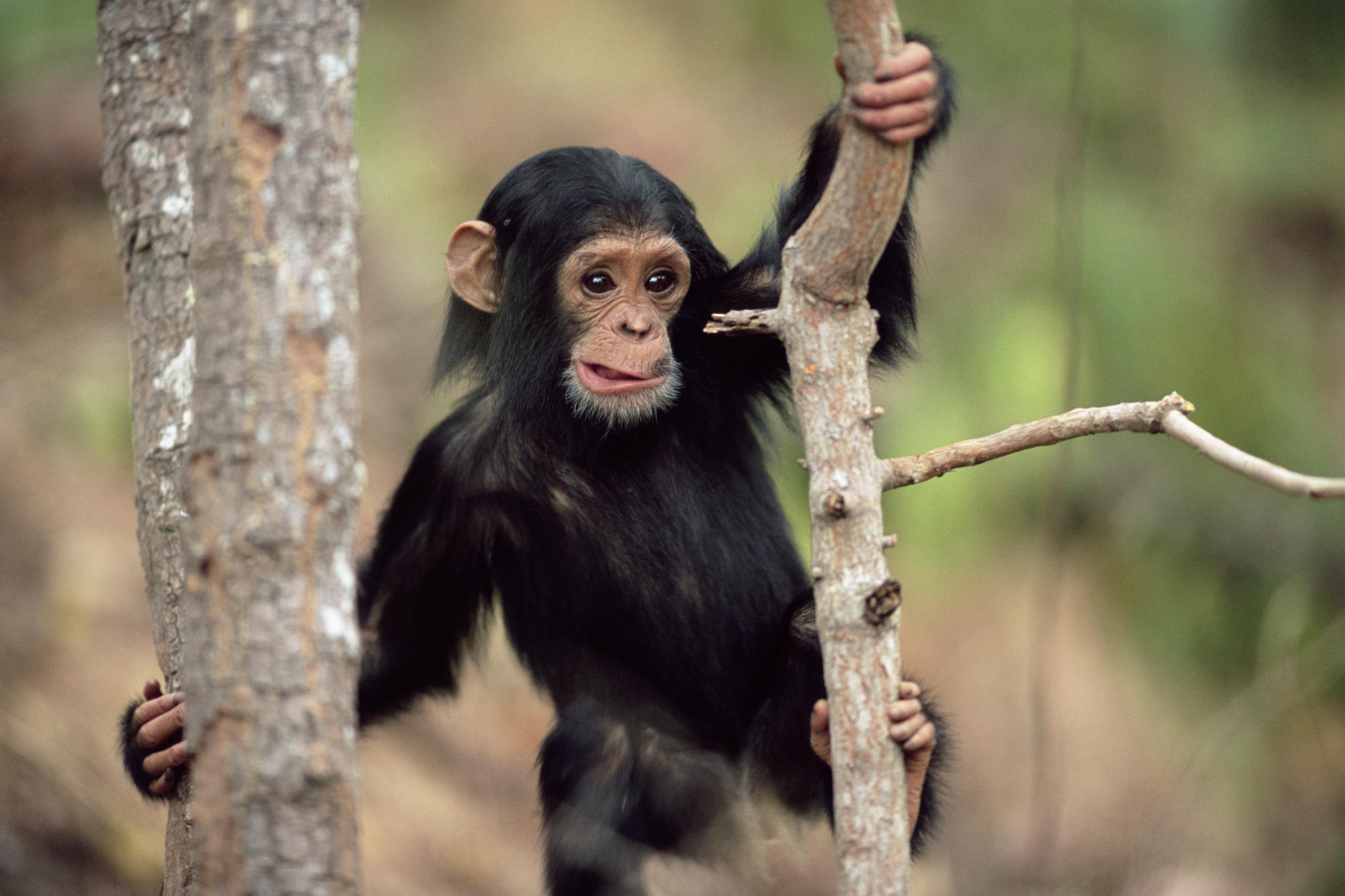




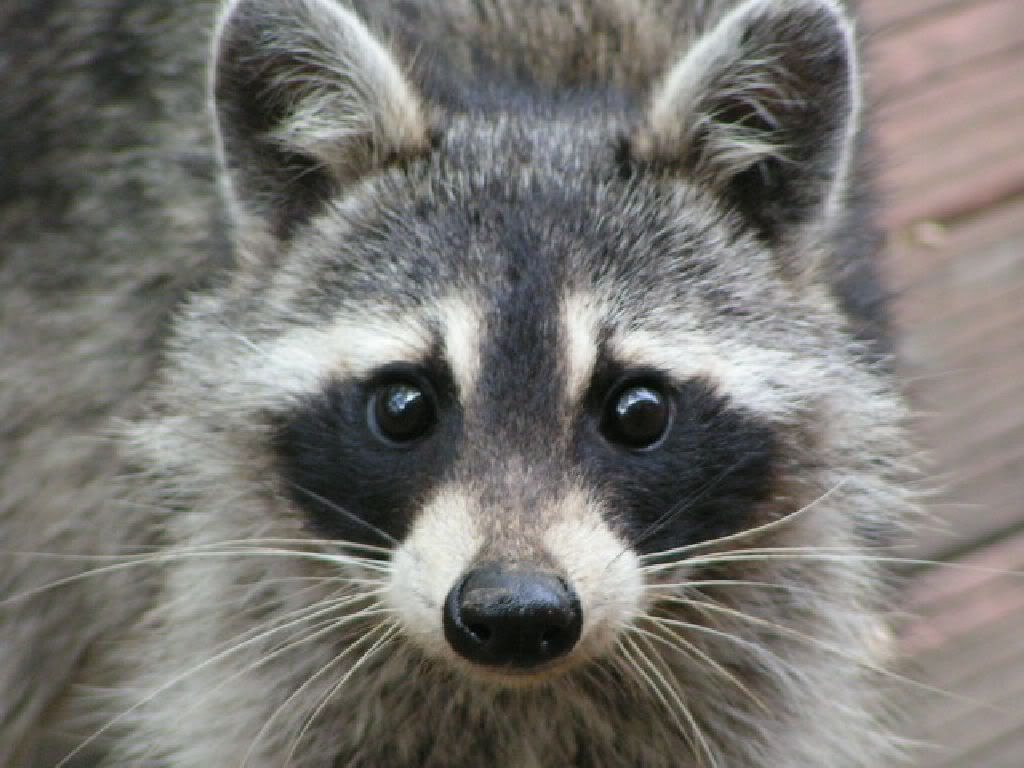
_3.jpg)




